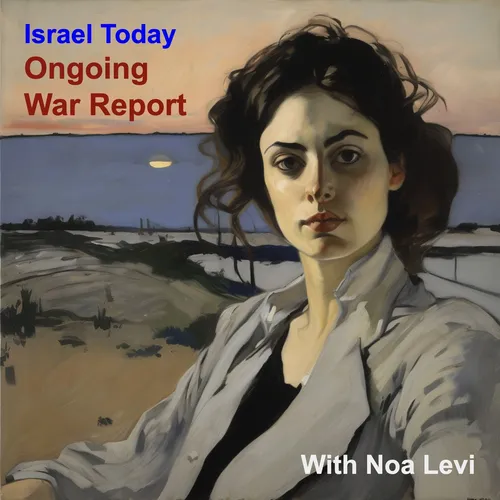Israel Today: Ongoing War Report - Update from 2025-09-11 at 05:05
- Author
- Noa Levi
- Published
- Thu 11 Sep 2025
- Episode Link
- https://www.spreaker.com/episode/israel-today-ongoing-war-report-update-from-2025-09-11-at-05-05--67714355
HEADLINES
Rafah Builds Two Aid Hubs for Civilians
Magen Unit Holds Line Two Killed
Hostages Haunt Gaza Talks Doha Spotlight
The time is now 1:01 AM in New York, I'm Noa Levi and this is the latest Israel Today: Ongoing War Report.
This hour, a calm outskirts the day’s violence remains fragile as security and relief efforts unfold along the border and in Gaza.
In northern Gaza, the Israeli Defense Forces confirm that two new Gaza humanitarian sites are being prepared in the Rafah region. The sites are intended to speed, protect, and streamline the flow of aid to civilians, with a clear division between distribution and unloading areas. Two compounds are under construction and are expected to be handed over to the Gaza Humanitarian Foundation in the coming days. Journalists were shown the compounds as workers prepared them for operation once security conditions are met. The effort is part of a broader shift in how aid logistics are managed since a March decision that limited aid into Gaza, a decision that many humanitarian groups say contributed to a deepening crisis. The Gaza Humanitarian Foundation reports it has distributed more than 161 million meals since May, and nearly 1.2 million meals on a single day this week, as it works to provide food to civilians amid a complex security environment. The foundation says the sites are being designed to minimize risk and to ensure safe routes for civilians and trucks alike, with new fences and concrete walls to guide movement and prevent unauthorized proximity to troops. Israel stresses that the military is not operating inside the sites; rather, it is conducting security actions around them and aiming to reduce danger to civilians and personnel.
On the security front, the Kibbutz Magen sheltering unit continues to shape a critical lesson from the October 7 attacks. Early that morning, Hamas fighters launched multiple waves of assault, and a civilian quick-response unit, led by Baruch Cohen, held the line under sustained fire. The defense allowed time for wider Israeli reinforcements to organize, and the battle ended with casualties on both sides: two members of the community were killed, and a senior security leader was seriously wounded when his vehicle was struck by a rocket. The unfolding account underscores a central theme of the conflict: local readiness and rapid response can determine the difference between catastrophe and survival in these border communities.
The broader regional picture remains in flux. Across hostilities and diplomacy, leaders and analysts continue to weigh the status of the broader alliance network surrounding the conflict. Competing assessments about Hamas’ leadership and power centers—especially in Doha where leadership in exile has been a focal point—highlight the delicate balance between military pressure and diplomacy. In parallel, discussions of a pathway back to negotiations persist in some circles, even as combat operations and hostage concerns complicate any political settlement. The fate of hostages remains a central, unresolved issue, infusing every diplomatic and humanitarian decision with urgency and gravity.
Around the international stage, the humanitarian effort has drawn attention from Washington and allied capitals. The United States continues to press for expanded relief channels as part of a broader strategy to support civilians while maintaining pressure on militant groups. A senior American official signaled openness to broadening the reach and scale of aid sites as part of a coordinated effort with regional partners. In this light, the expansion of relief infrastructure is framed not only as a humanitarian imperative but also as a strategic tool intended to stabilize corridors for aid and reduce civilian risk.
Culturally and globally, the world watches as major humanitarian questions intersect with security realities. The debate over how...
